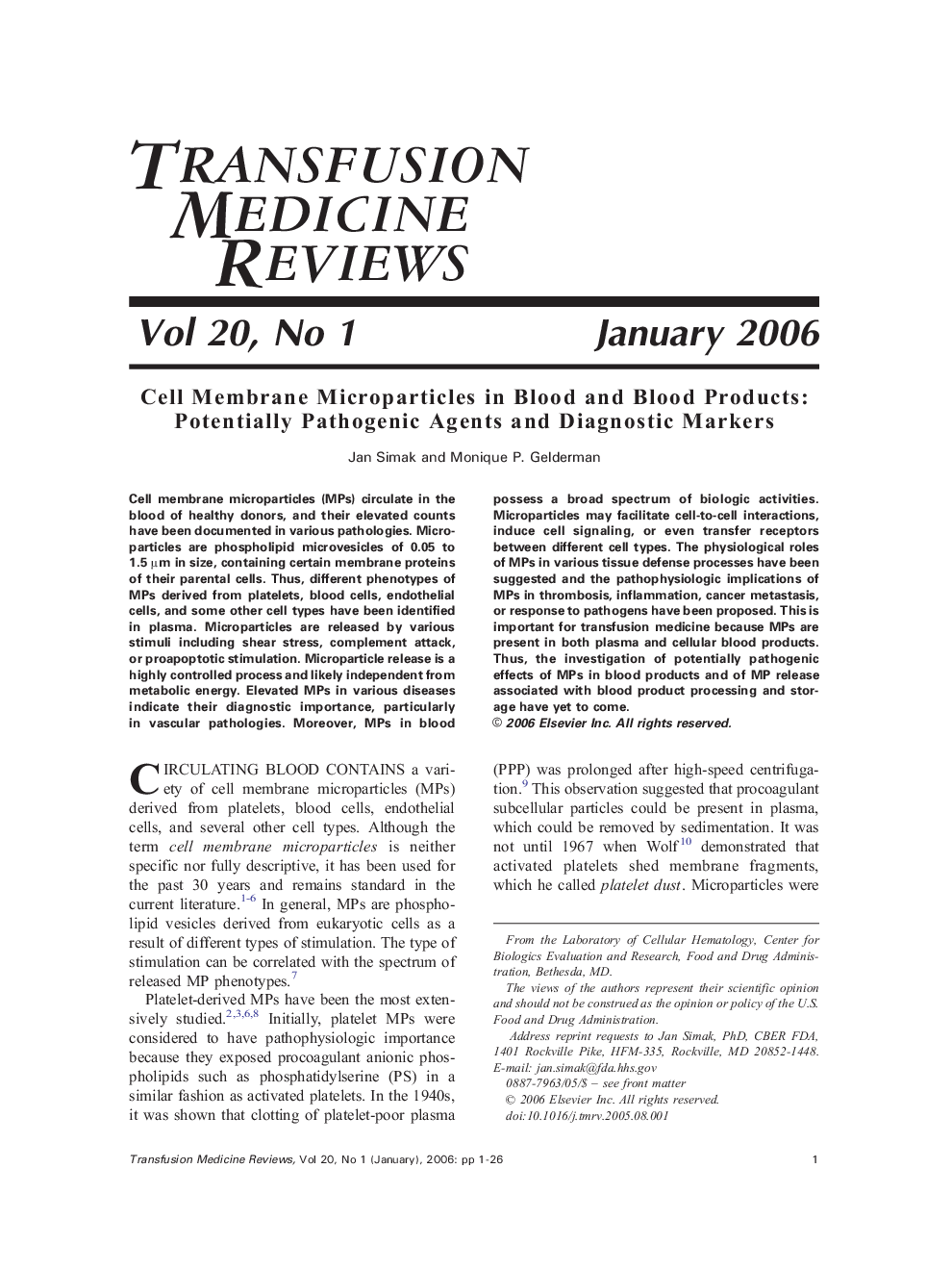| Article ID | Journal | Published Year | Pages | File Type |
|---|---|---|---|---|
| 3337041 | Transfusion Medicine Reviews | 2006 | 26 Pages |
Cell membrane microparticles (MPs) circulate in the blood of healthy donors, and their elevated counts have been documented in various pathologies. Microparticles are phospholipid microvesicles of 0.05 to 1.5 μm in size, containing certain membrane proteins of their parental cells. Thus, different phenotypes of MPs derived from platelets, blood cells, endothelial cells, and some other cell types have been identified in plasma. Microparticles are released by various stimuli including shear stress, complement attack, or proapoptotic stimulation. Microparticle release is a highly controlled process and likely independent from metabolic energy. Elevated MPs in various diseases indicate their diagnostic importance, particularly in vascular pathologies. Moreover, MPs in blood possess a broad spectrum of biologic activities. Microparticles may facilitate cell-to-cell interactions, induce cell signaling, or even transfer receptors between different cell types. The physiological roles of MPs in various tissue defense processes have been suggested and the pathophysiologic implications of MPs in thrombosis, inflammation, cancer metastasis, or response to pathogens have been proposed. This is important for transfusion medicine because MPs are present in both plasma and cellular blood products. Thus, the investigation of potentially pathogenic effects of MPs in blood products and of MP release associated with blood product processing and storage have yet to come.
